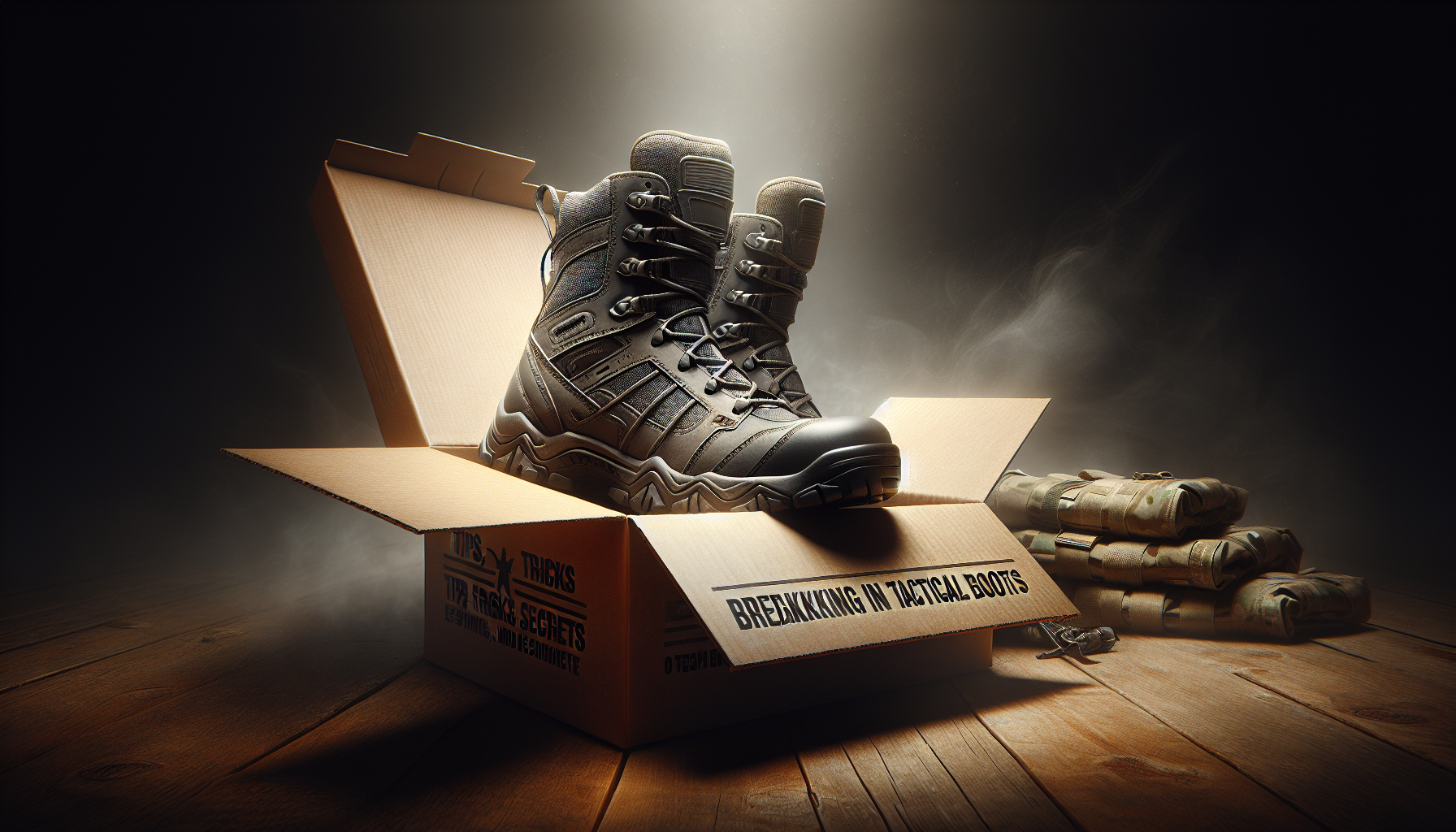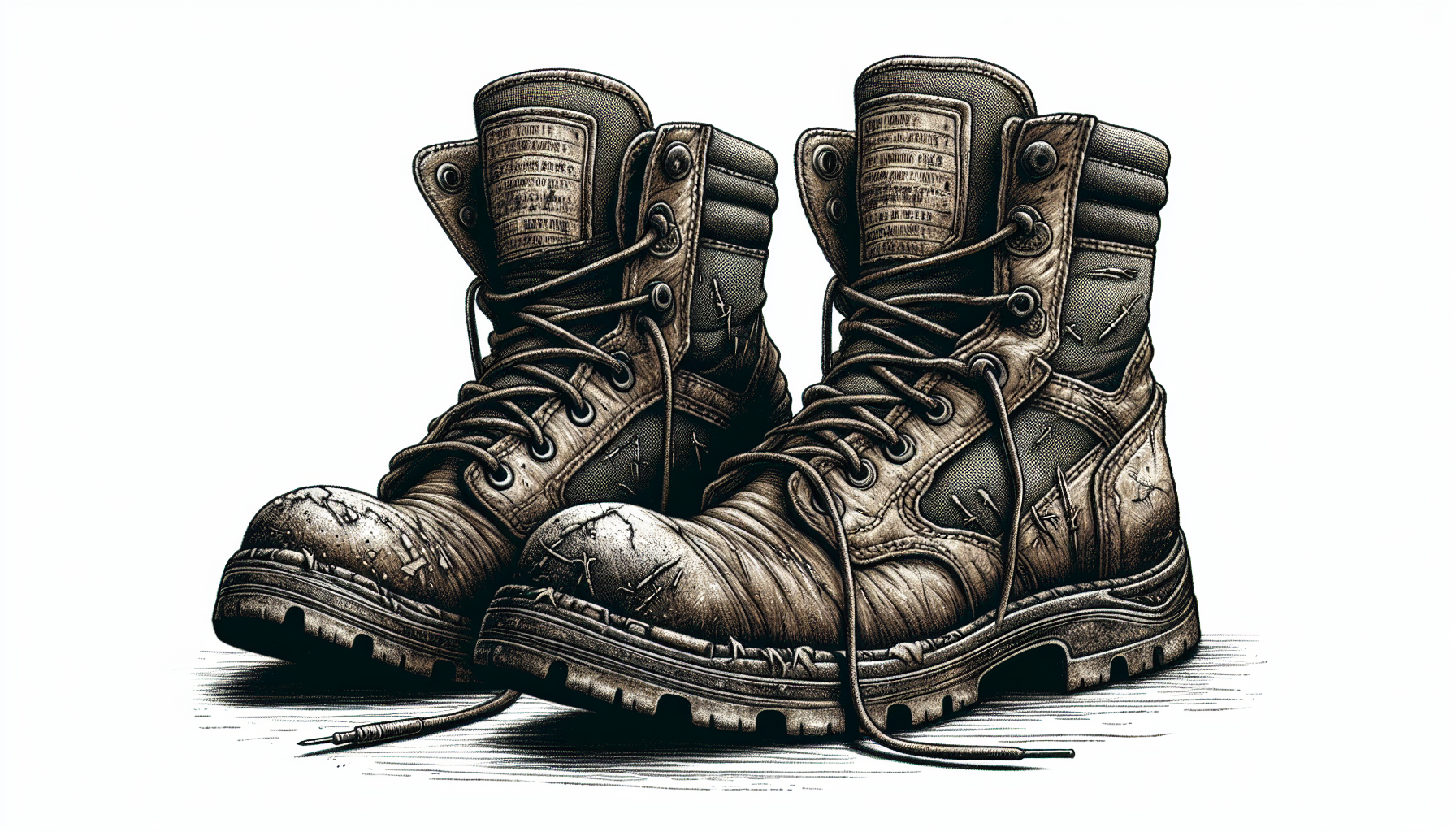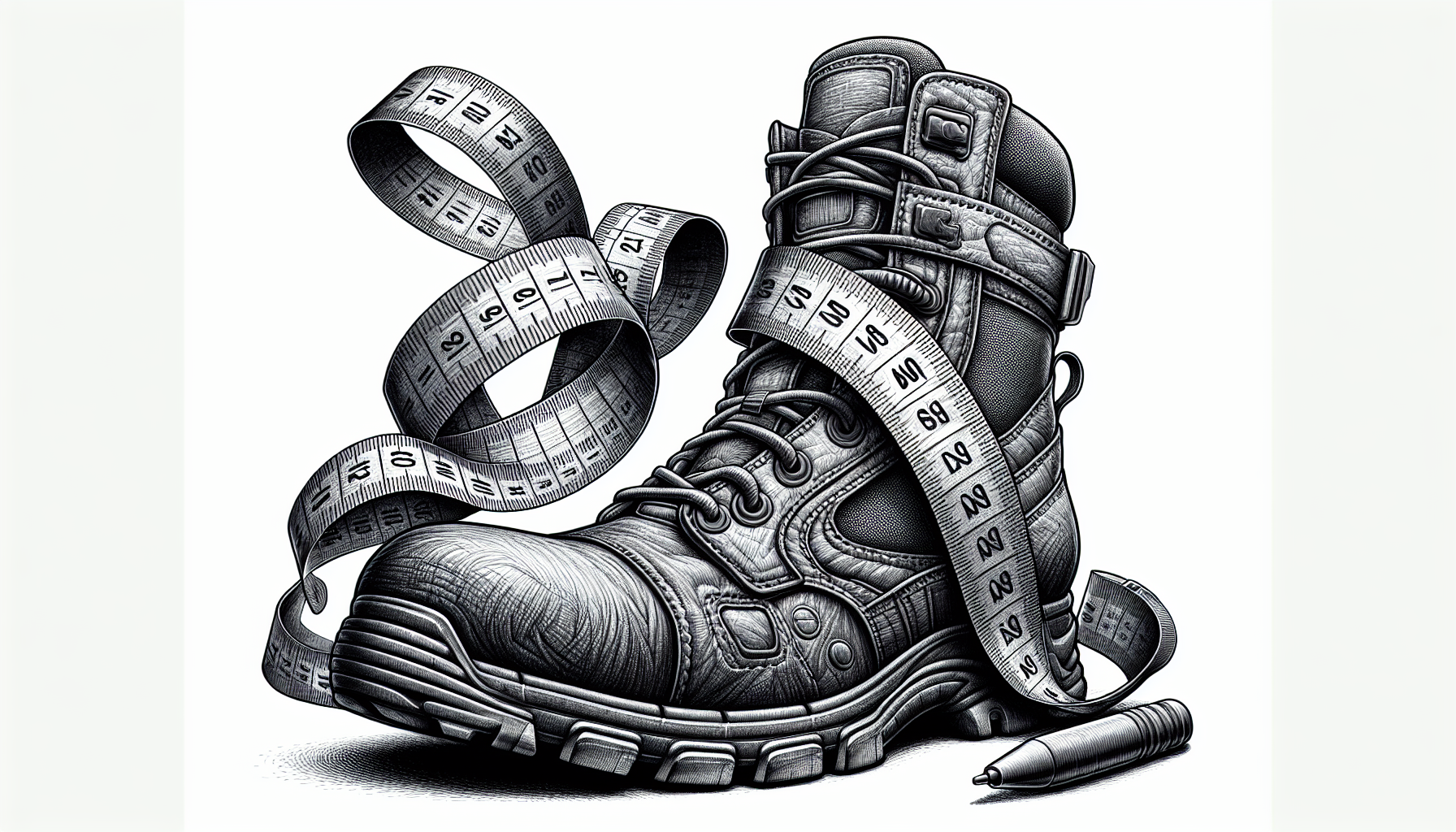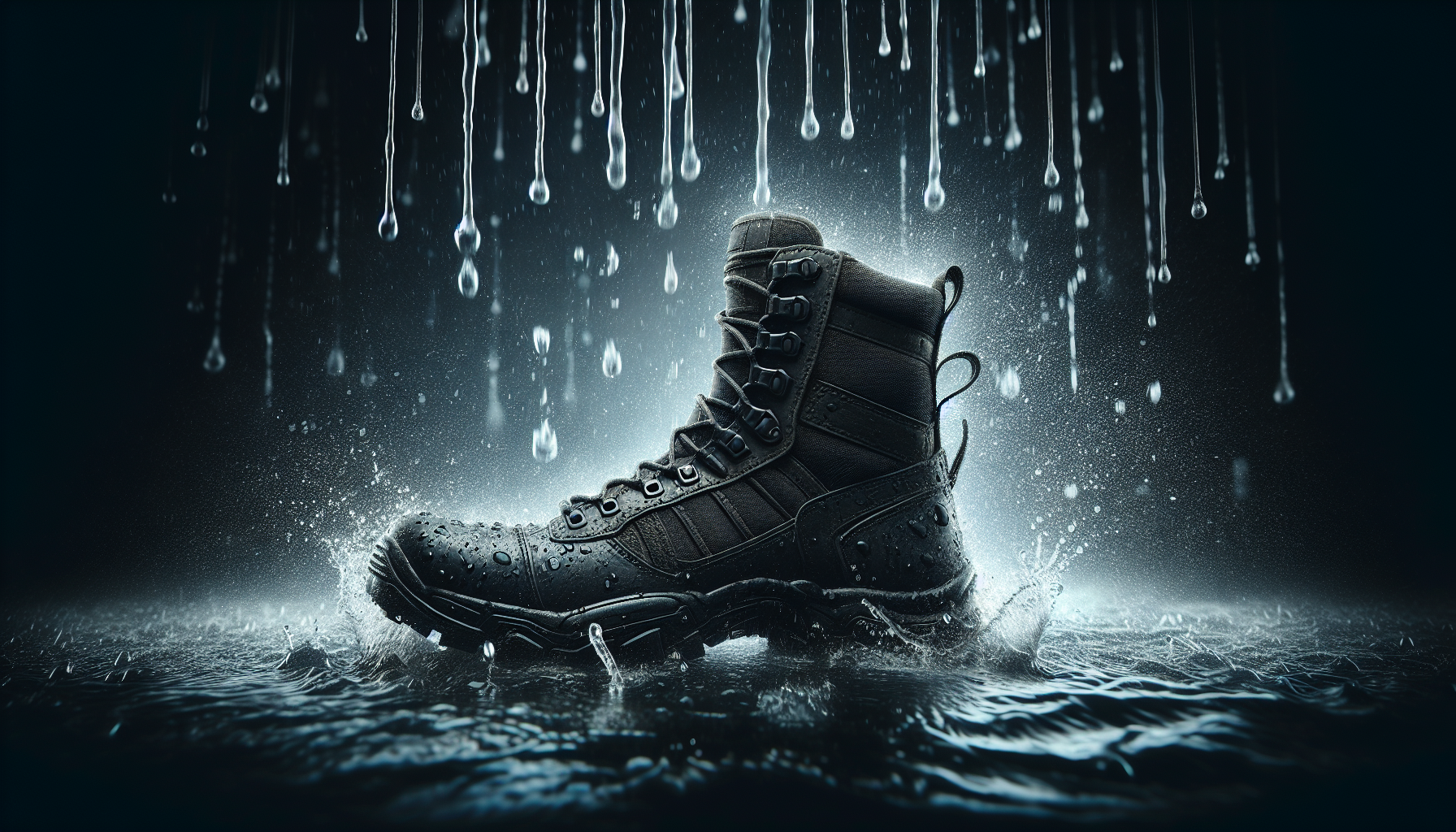Beginner’s Guide To Breaking In New Tactical Boots
So, you’ve just gotten your hands on a brand new pair of tactical boots and you’re eager to hit the ground running with them. But wait, before you lace them up and charge into battle, there’s an important step you can’t afford to skip – breaking them in! In this beginner’s guide, we’ll walk you through some tried-and-true techniques to ensure maximum comfort and durability for those shiny new boots of yours. Get ready to step into a world of adventure with your perfectly broken-in tactical boots!
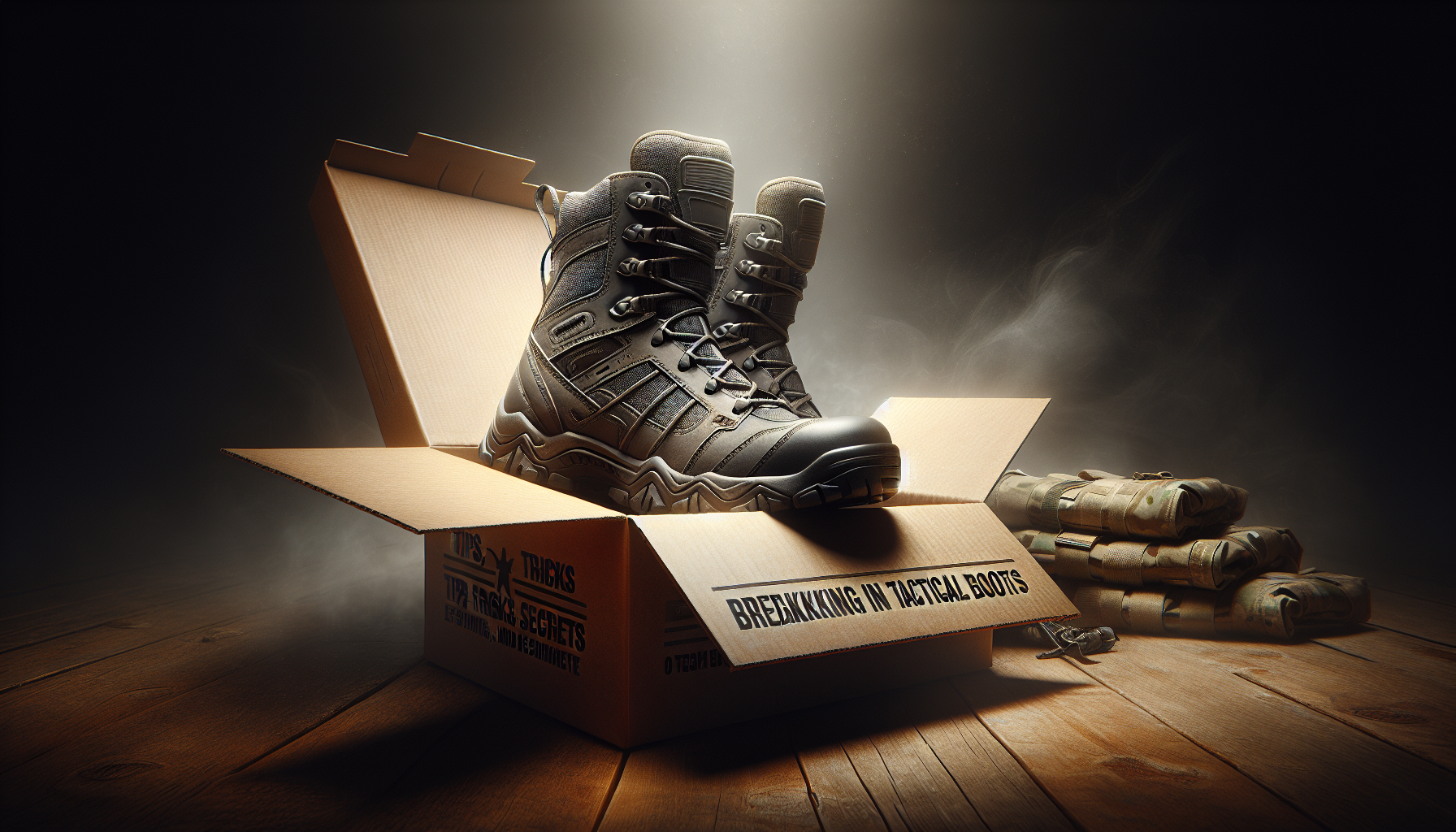
Choosing the Right Size of Tactical Boots
When it comes to tactical boots, finding the right fit is crucial for comfort and performance. To ensure you choose the correct size, the first step is to measure your foot size accurately. Start by measuring the length and width of your foot using a measuring tape or ruler. It’s important to measure both feet as they might have slightly different sizes.
Once you have your measurements, refer to the size chart provided by the boot manufacturer. Different brands may have varying size standards, so it’s essential to follow their guidelines. Pay attention to any additional sizing information they provide, such as wide or narrow fits.
Another factor to consider is the thickness of your socks and any orthotics you might use. If you often wear thicker socks or have orthotic inserts, you may need to go up half a size to accommodate them comfortably. Conversely, if you prefer thinner socks, you may be able to stick with your usual size.
Lastly, don’t forget to try on different brands and models of tactical boots. Each one may have a slightly different fit and feel, so it’s worth exploring different options to find the one that suits you best. Remember, choosing the right size is the foundation for a great boot-wearing experience.
Prepare Your Boots Before Wearing
Before you start wearing your new tactical boots, it’s essential to prepare them properly. This process involves several steps to ensure the boots are in top condition and ready for use.
Firstly, inspect the boots for any defects or manufacturing issues. Look for loose stitches, missing hardware, or any structural problems. If you notice any issues, contact the manufacturer or retailer for a possible exchange or repair.
Next, remove any excess packaging and tags from the boots. These can be annoying and uncomfortable if left inside the boots. Carefully cut off any unnecessary tags or packaging while being cautious not to damage the boots.
To keep your boots in excellent condition, it’s crucial to clean and condition them before wearing. Use mild soap and water to clean the exterior of the boots, paying close attention to any soiled areas. After cleaning, allow the boots to dry thoroughly before moving on to conditioning. Apply a suitable leather conditioner or polish to keep the leather supple and protected.
Depending on your needs and the climate you’ll be wearing the boots in, you may also consider applying a waterproofing spray. This extra layer of protection can help keep your feet dry and comfortable in wet conditions.
By taking the time to prepare your boots properly, you’ll ensure they are comfortable, durable, and ready to perform in any situation.
Break-in Process for Tactical Boots
Breaking in new tactical boots is an important step to achieve maximum comfort and flexibility. Here are some tips to guide you through the break-in process:
Start by wearing your boots for short periods, gradually increasing the duration over time. This allows your feet and the boots to adjust to each other without causing excessive discomfort.
Thick socks can help fill in any extra space inside the boots. They provide cushioning and can prevent friction that leads to blisters. Consider wearing moisture-wicking socks to keep your feet dry even during long days of wear.
Moisture and heat can help accelerate the break-in process. After a few short periods of wear, try wearing your boots with damp socks or use a hairdryer to warm the leather and enhance its flexibility.
Boot stretchers or inserts can be helpful if you have specific areas that require extra space or if you need to stretch the boots for a more custom fit. Follow the manufacturer’s instructions carefully to avoid damaging the boots.
During the break-in process, pay attention to any problem areas that cause discomfort or rubbing. Apply additional conditioning or use leather balms to soften those areas and aid in the break-in.
Gradually increase the wear time and activity level as your boots become more comfortable. Avoid rushing the process to prevent unnecessary strain or potential injury to your feet.
By following these steps, you’ll gradually break in your tactical boots without sacrificing comfort or risking injuries.
Preventing Blisters and Hot Spots
Blisters and hot spots are common foot issues when breaking in new boots. However, there are several preventive measures you can take to minimize their occurrence.
Wearing proper moisture-wicking socks is essential to keep your feet dry and reduce friction. Moisture-wicking socks draw sweat away from your skin, preventing its buildup and reducing the chance of blisters.
If you feel a hot spot developing, use moleskin or blister cushions to protect the affected area. These adhesive pads provide an extra layer of cushioning and help reduce friction, preventing blisters from forming.
To further reduce friction, you can apply friction-reducing products to your feet or the problem areas of the boots. These products, such as powders or balms, create a barrier between your skin and the boots, minimizing friction and discomfort.
Taping problematic areas can also be beneficial. Use zinc oxide or athletic tape to provide extra cushioning and support to areas prone to blisters or rubbing. Make sure the tape is secure but not constricting to maintain proper blood flow.
Proper lacing and boot fit are crucial in preventing blisters and hot spots. Make sure your boots are laced snugly but not too tight. Ensure that there is enough room for your toes to move comfortably while maintaining stability and support.
By incorporating these preventive measures into your break-in process, you can significantly reduce the risk of blisters and hot spots, allowing you to enjoy your new tactical boots without discomfort.
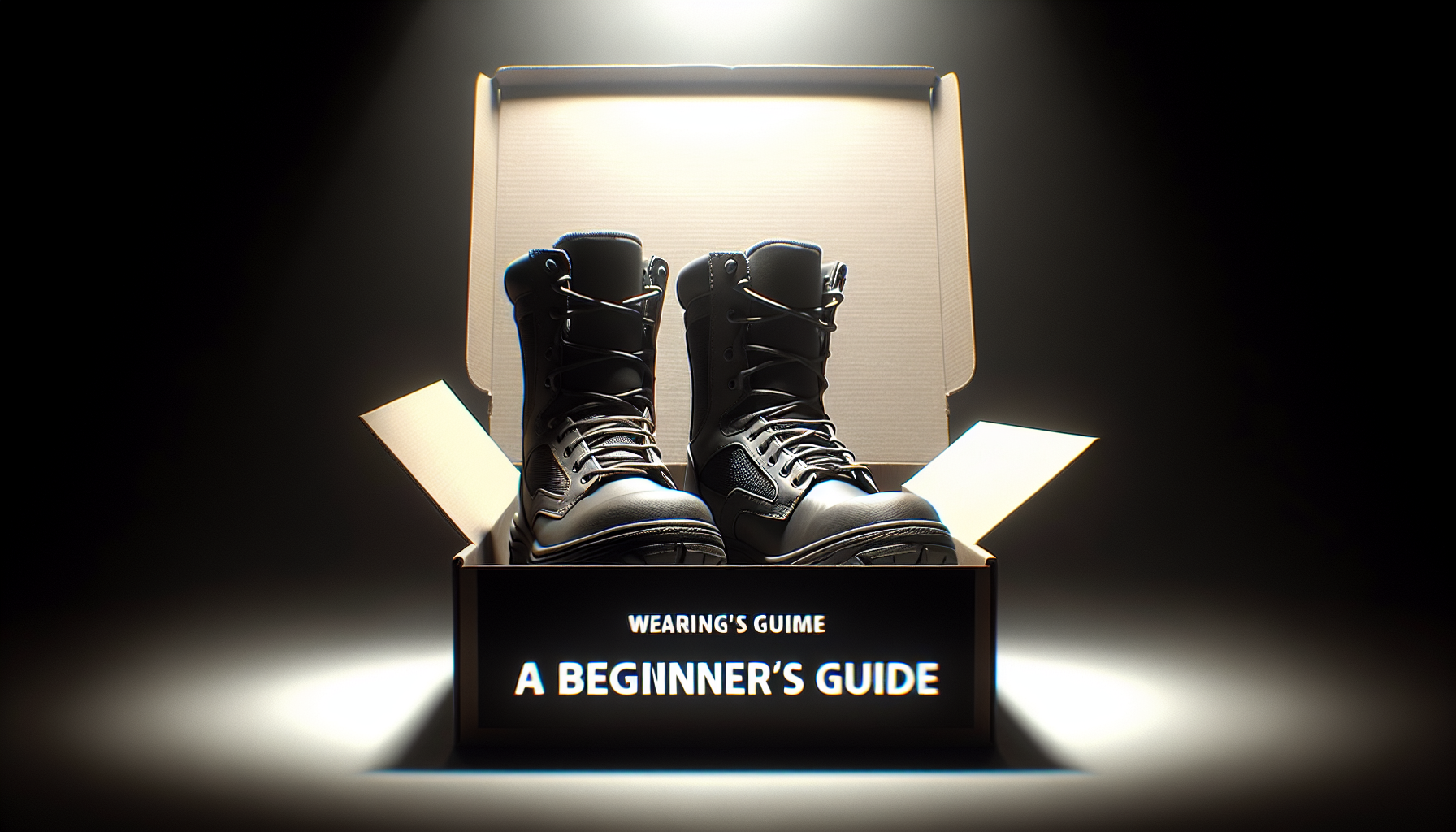
Caring for Tactical Boots
To keep your tactical boots performing their best and looking their finest, regular care and maintenance are essential. Here are some key steps to include in your boot care routine:
Clean and condition your boots regularly using products specifically designed for leather footwear. This helps remove dirt, debris, and sweat that can accumulate over time. Cleaning also prevents the leather from drying out and cracking.
After each use, take the time to remove any dirt or debris from your boots. Use a soft brush or cloth to gently brush away any loose particles. This prevents them from grinding into the leather and damaging its surface.
Apply waterproofing spray or wax as needed to maintain the water-resistance of your boots. This step is particularly important if you regularly wear your boots in wet or damp conditions. Water can damage the leather and shorten its lifespan if not properly protected.
Regularly inspect your boots for any minor damage or signs of wear. Look for loose stitches, worn-out soles, or any other issues that could compromise the integrity of your boots. Addressing minor damage promptly can prevent it from becoming more severe and costly to repair.
When not in use, store your boots properly to maintain their shape and durability. Keep them in a well-ventilated area away from direct sunlight and extreme temperatures. Avoid stacking heavy objects on top of the boots, as this can cause deformation or creasing.
By incorporating these simple care steps into your routine, you’ll extend the lifespan of your tactical boots and keep them looking and performing their best for years to come.
Dealing with Common Issues
While tactical boots are designed for durability and performance, there may be some common issues that arise over time. Here are some solutions to address these issues:
Painful pressure points can sometimes develop due to long hours of wearing boots. To alleviate discomfort, try adding cushioning inserts or gel pads to the problem areas. These inserts provide extra support and cushioning where you need it most.
Excessive sweating and odor are common issues in any footwear, especially in boots that are worn for long periods. Combat this by wearing moisture-wicking socks, changing them regularly, and using foot powders or sprays designed to reduce perspiration and odor.
Worn-out insoles can cause discomfort and reduced support. If you notice your insoles are no longer providing adequate cushioning or stability, consider replacing them with new ones. Many boot manufacturers offer replacement insoles designed specifically for their boots.
Loose or broken laces can be frustrating, especially if they come undone frequently. Replace them with new laces of the appropriate length and thickness. Make sure to choose laces that are durable and suitable for the demands of your activities.
Sole separation can occur over time, especially if the boots are subjected to heavy use. If you notice any signs of separation, such as the sole starting to peel away from the upper, it’s essential to address the issue promptly. Contact the manufacturer or a professional repair service to assess the damage and determine the best course of action.
By effectively addressing these common issues, you’ll prolong the lifespan of your boots and maintain their comfort and performance.
Common Mistakes to Avoid
When it comes to breaking in and caring for tactical boots, there are several common mistakes that you should avoid. By doing so, you’ll ensure optimal comfort, longevity, and performance of your boots. Here are a few common mistakes to be aware of:
Skipping the initial preparation steps can lead to discomfort and potential damage to the boots. Take the time to inspect, remove excess packaging, clean, condition, and waterproof your boots before wearing them.
Wearing boots for extended periods before they are properly broken in can cause unnecessary discomfort and potentially lead to blisters or other foot issues. Follow the gradual break-in process outlined earlier to ensure the boots adjust to your feet gradually.
Using harsh cleaning products can damage the leather or other materials of your boots. Stick to mild soap and water or products specifically designed for leather footwear. Avoid using bleach, strong detergents, or abrasive materials.
Neglecting to dry your boots properly after they get wet can cause mold, cracking, or other types of damage. Allow your boots to air dry naturally in a well-ventilated area, away from direct heat sources. Avoid using a hairdryer or placing them near a heater, as excessive heat can damage the leather.
Storing boots in damp or humid conditions can lead to mold growth and deterioration of the materials. Ensure your boots are completely dry before storing them and keep them in a cool, dry place. Consider using silica gel packets or other moisture-absorbing products to further protect your boots.
By avoiding these common mistakes, you’ll preserve the integrity of your boots and enjoy their benefits for a longer time.
When to Seek Professional Assistance
While many boot-related issues can be addressed at home, there are times when professional assistance may be necessary. Here are some situations where seeking professional help is recommended:
Persistent pain or discomfort that persists even after the break-in process. A professional can assess the fit of your boots, identify any underlying issues, and recommend suitable solutions to alleviate the discomfort.
Structural or functional issues with the boots that affect their performance or safety. This includes significant defects, sole separation, or issues with the structural integrity of the boots. Professional repair or replacement may be necessary in these cases.
Severe damage or sole separation that cannot be addressed at home. If your boots have suffered significant damage or if the soles have completely detached from the upper, professional repair or replacement is often the best course of action.
Complex repairs or modifications that you are not equipped or comfortable doing yourself. Examples include extensive stitching repairs, sole replacements, or modifications such as adding ankle support. Professionals have the expertise and equipment to handle these tasks effectively.
When in doubt, it’s always a good idea to seek professional assistance. They can provide expert advice and solutions tailored to your specific boot-related issues.
Troubleshooting Tips for a Better Break-in
If you’re experiencing difficulties during the break-in process, don’t worry! Here are some troubleshooting tips to help you achieve a better break-in period:
Utilize boot stretching techniques if you have specific areas that require more space. There are various stretching tools available that can target problem areas and provide a more customized fit.
Alternate between multiple pairs of boots during the break-in process. This allows your feet to rest and recover while you continue to wear the boots. It can also help reduce the likelihood of developing blisters and hot spots.
Experiment with different lacing techniques to fine-tune the fit of your boots. You may find that certain lacing patterns provide better support or alleviate pressure points. Look for lacing techniques online or consult professionals for guidance.
Consider exploring custom insole options if you have specific foot conditions or require additional support. Custom insoles can provide better arch support, cushioning, and improved alignment, enhancing your overall comfort.
If you’re struggling to achieve a comfortable fit on your own, consider utilizing professional boot stretching services. These services are equipped with specialized equipment and expertise to stretch your boots effectively and ensure a more comfortable fit.
By employing these troubleshooting tips, you’ll overcome any roadblocks encountered during the break-in process and enjoy a better fit and comfort with your tactical boots.
Conclusion
Choosing the right size tactical boots, preparing them properly before wearing, and following a gradual break-in process are essential for maximizing comfort and longevity. Proper care, preventive measures, and addressing common issues can further enhance your boot-wearing experience.
Remember to avoid common mistakes, seek professional assistance when needed, and troubleshoot any difficulties that arise during the break-in process. By following these comprehensive guidelines, you’ll be well-equipped to enjoy the benefits of your tactical boots to the fullest. Don’t forget to maintain regular care and maintenance to ensure your boots continue to perform at their best.

